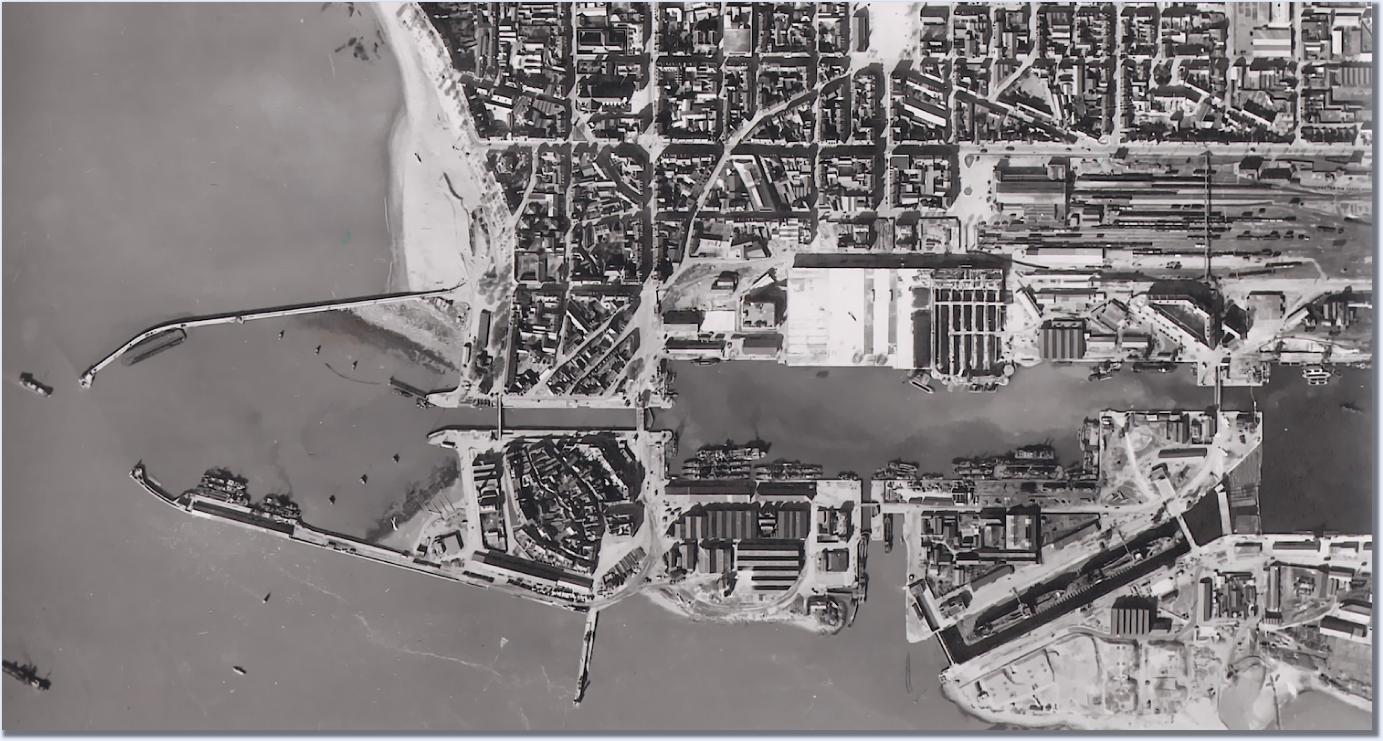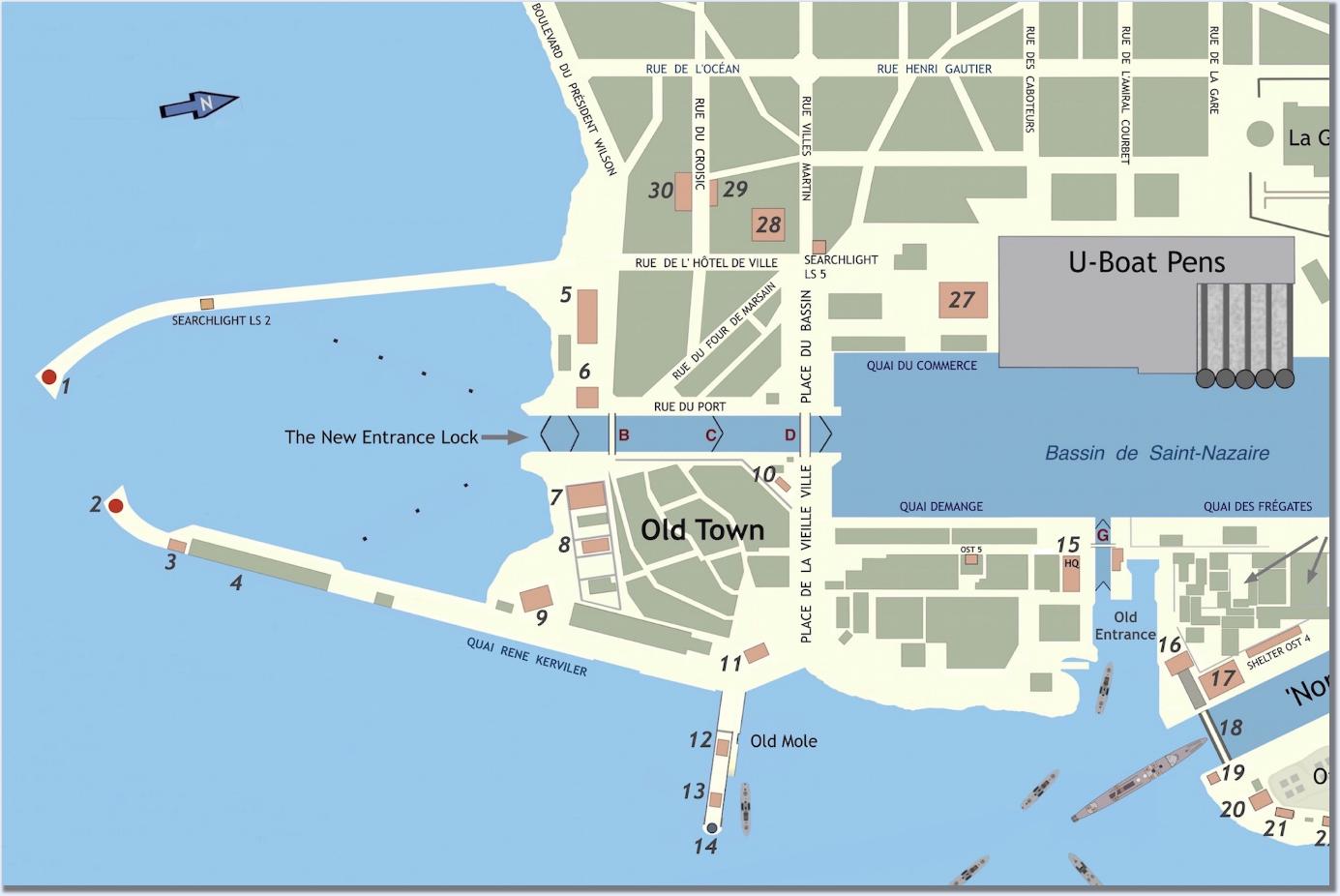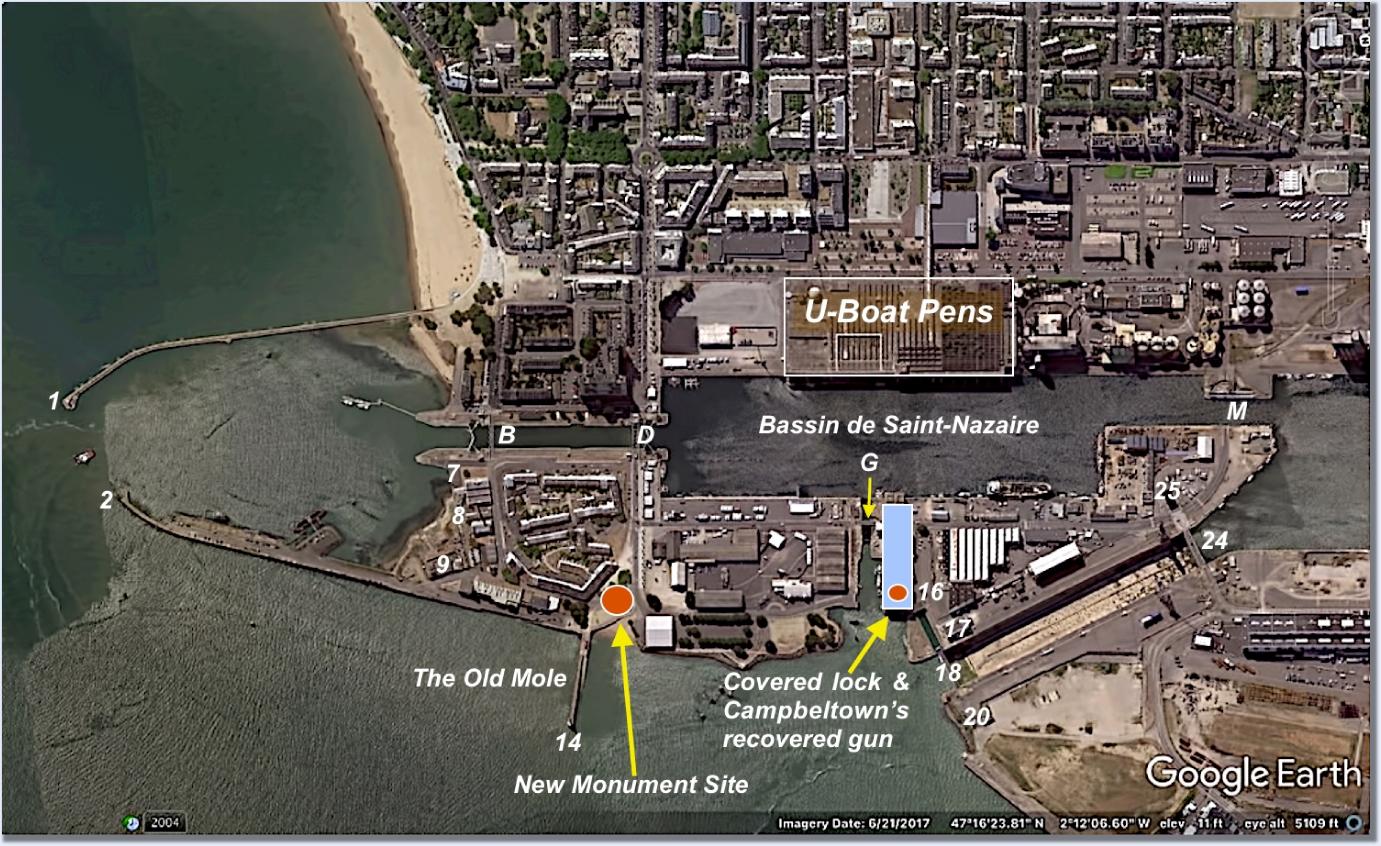Exploring the Saint-Nazaire Battlefield |
||
During World War Two, the port of Saint-Nazaire suffered heavily from Allied bombing to the extent that, when taken with post-war reconstruction and development, the surface structures that you see today often bear little resemblance to the streets and buildings which faced the Commandos of 1942. In fact, at the end of the War, Saint-Nazaire was a town of prefabs, with only pockets of original buildings remaining. A recent spate of commercial development has swept some of even these aside, the original railway station, for example, enjoying a new incarnation as a modern theatre. And yet in spite of these major works, many of the targets of the 1942 raid remain in place to be visited today. A number of these are original, while others are like-for-like replacements, the newest of these being the outer caisson of the Normandie Dock (Forme Joubert), whose German-built replacement is of quite recent vintage. All, with the exception of the Pumping Station and South Winding House, still vital components of the working dock and therefore closed to the public, can be accessed easily; and even these can be viewed comfortably from the roof of the huge fortified passage lock, shown in light blue next to Bridge 'G' in IMAGE 3, which was constructed after the raid to protect the Old Entrance from further attacks.. The most glaring physical exception to the 1942 view is the almost complete transformation of the Old Town whose narrow streets and alleys now exist only in contemporary images. Even here, however, structures of interest to the Commando parties intending to land at the Old Mole - the South Entrance Pumping Station (7) and the Sante Maritime (8) whose basement housed the local Civil Defence detachment - are amongst the handful from that era still standing. The three images immediately below show the town as it was on the eve of battle - along with a key identifying the most important features - and as it is today. From these you can see immediately that while the surface structures may often differ, the underlying delineation of basins, locks, lock-gates and bridges remains exactly the same having, in many cases, survived the Commandos' best attempts to destroy them. The individual images can be 'grabbed' and printed off, to use as a handy guide when walking the battlefield. |
||
IMAGE 1 Saint-Nazaire March, 1942 |
||
IMAGE 2 Key to aerial image above. |
||
IMAGE 3 Saint-Nazaire 2017: the letters and numbers refer to targets and fortifications shown on the key and still visible today |
||
http://www.visit-saint-nazaire.com is the tourism link to the port. Given that information relating to the period of World War Two is not always easy for visitors to find while in Saint-Nazaire, we would recommend you contact us prior to any visit relating to the raid, and we will do what we can to help you get the best from your visit. The original memorial to the raid (Monument du Commando) erected in 1947, faced the beach top left. This has now been moved to a new site close to the base of the Old Mole (IMAGE 3). |
||
 |
||||||
All material contained in this site is subject to copyright and must not be reproduced in any format without the consent of the relevant copyright holder |
||||||


